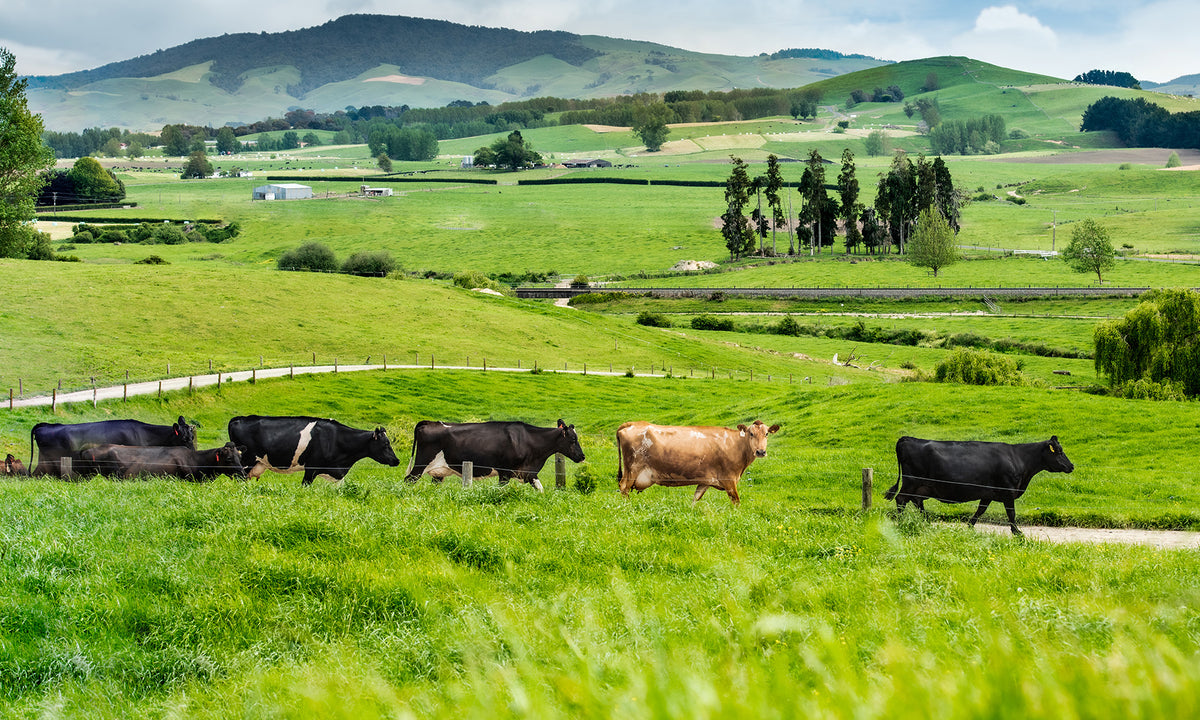The significance of a well-balanced diet in achieving optimal health and well-being cannot be overstated. As protein plays a crucial role in various metabolic processes, the quality of protein sources is as important as the quantity consumed. Grass-fed whey protein powder, a natural, nutrient-dense, and environmentally friendly alternative to conventional whey protein has been gaining popularity among fitness enthusiasts, athletes, and individuals seeking a healthier lifestyle.
In this article, we will examine the origins of grass-fed whey protein powder, its benefits, and how it compares to its conventional counterparts. We will also provide guidance on selecting the best grass-fed whey protein powder and incorporating it into one's daily regimen.
What is Grass-Fed Whey Protein Powder?
Grass-fed whey protein powder is a dietary supplement derived from the milk of cows that have grazed on natural grasses and forage, as opposed to grain-based feeds. The resulting whey protein is considered nutritionally superior and more environmentally sustainable due to the cows' natural diet and humane farming practices.
Whey protein, a byproduct of cheese production, contains all nine essential amino acids necessary for muscle growth and repair. One chooses a higher-quality, sustainable, and healthier protein source by opting for grass-fed whey protein powder.
Benefits of Grass-Fed Whey Protein Powder
1. Enhanced Nutritional Profile
Grass-fed whey protein powder has been shown to possess a superior nutritional profile compared to its conventional counterparts. It contains higher concentrations of omega-3 fatty acids, which have been linked to various health benefits, such as improved cardiovascular health, reduced inflammation, and enhanced cognitive function. Additionally, grass-fed whey protein contains elevated levels of conjugated linoleic acid (CLA), a fatty acid associated with fat loss, increased muscle mass, and improved immune function.
2. Antioxidant Properties
Grass-fed whey protein powder is abundant in antioxidants, particularly glutathione – a potent antioxidant that plays a critical role in the body's detoxification process and supports a healthy immune system. Regular consumption of grass-fed whey protein can help enhance the body's natural defence mechanisms against free radicals and oxidative stress, which contribute to aging and various diseases.
3. Hormone- and Antibiotic-Free
Cows raised on natural grasses are generally healthier and less susceptible to illness than those raised on grain-based feeds, reducing the need for antibiotics. Furthermore, grass-fed cows are not treated with artificial growth hormones, which are commonly used to increase milk production in conventional dairy farming. By choosing a grass-fed whey protein powder, one can be confident in consuming a cleaner, healthier product devoid of hormones and antibiotics.
4. Environmental Sustainability
Grass-fed dairy farming has a lower environmental impact than conventional dairy farming. It promotes biodiversity, reduces soil erosion, and helps maintain healthy ecosystems. Choosing a grass-fed whey protein powder supports sustainable and responsible farming practices that benefit the planet and future generations.
5. Improved Organoleptic Properties
Many consumers find grass-fed whey protein powder to have a superior taste and texture to conventional whey protein powders. The natural, grass-fed diet of the cows imparts a creamier and richer flavour to the whey protein, enhancing its palatability.
Selecting the Best Grass-Fed Whey Protein Powder
1. Seek Third-Party Certifications
When purchasing grass-fed whey protein powder, select products certified by reputable third-party organisations, such as the American Grass-fed Association (AGA) or Fonterra's NZMP for Grass-fed Dairy. These certifications ensure that the product adheres to strict standards for grass-fed sourcing and the absence of genetically modified organisms (GMOs).
2. Prioritise Cold-Processed and Undenatured Protein
Cold processing is a method of extracting whey protein without employing high heat or chemicals, which can denature the protein and reduce its nutritional value. Undenatured whey protein maintains its native structure and bioavailability, ensuring consumers benefit most from the supplement. Look for grass-fed whey protein powders explicitly mentioning cold processing or undenatured protein on the label.
3. Opt for Minimal Additives
The most effective grass-fed whey protein powders have a short and clean ingredient list. Avoid products containing artificial sweeteners, colours, or flavours, as these may have adverse health effects. Instead, consider natural sweeteners like stevia or monk fruit extract if you prefer a flavoured protein powder.
4. Assess Protein Concentration
The protein concentration of a whey protein powder is a crucial factor when making a selection. Choose a product with a high protein content per serving, ideally around 20-25 grams per scoop. This will ensure that you're getting an adequate amount of protein to support your fitness and health goals.
5. Verify a Satisfaction Guarantee
High-quality grass-fed whey protein powder manufacturers often stand by their products by offering a satisfaction guarantee. This allows consumers to try the product risk-free and return it if unsatisfied with its taste, texture, or performance.
Incorporating Grass-Fed Whey Protein Powder into Your Daily Routine: Practical Suggestions
Grass-fed whey protein powder is a versatile supplement that can be easily integrated into one's daily routine. Here are some evidence-based ideas to get started:
1. Protein Shakes
The most common method of consuming grass-fed whey protein powder is by blending it with water, milk, or a milk substitute (such as almond or coconut milk) to create a protein shake. Additionally, one can include fruits, vegetables, nuts, seeds, and other nutrient-dense ingredients to make a wholesome smoothie.
2. Baking and Cooking
Grass-fed whey protein powder can be used in recipes such as pancakes, muffins, cookies, and energy bars. By incorporating it into your favourite recipes, you can boost the protein content of your meals and snacks while enjoying the benefits of grass-fed whey protein.
3. Oatmeal and Yogurt
Elevate your breakfast by adding a scoop of grass-fed whey protein powder to your oatmeal or yogurt. This simple addition will provide extra protein and nutrients to help you power through your morning.
4. Post-Workout Recovery
After a workout, consuming grass-fed whey protein powder can help support muscle recovery and growth. Mix a scoop of protein powder with water or your favourite beverage and enjoy it within 30 minutes of exercising to maximize its benefits.
Conclusion
Grass-fed whey protein powder is a superior, nutrient-dense, and environmentally friendly alternative to conventional whey protein powders. By choosing grass-fed whey protein, you're investing in your health and well-being and supporting sustainable and responsible farming practices. With its numerous scientifically backed benefits, exceptional taste, and versatile applications, grass-fed whey protein powder is the ultimate choice for athletes, fitness enthusiasts, and health-conscious individuals. As a complete protein source with an enhanced nutritional profile, antioxidant properties, and a cleaner composition, it offers a range of advantages for those seeking to improve their overall health and well-being.
Check out Whey Protein DIAAS Complex 1.61 for an example of a high-quality whey protein powder made from premium New Zealand grass-fed dairy ingredients.




